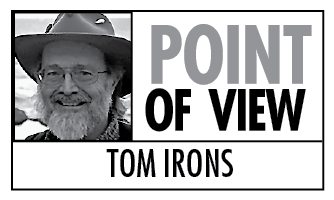Those of us born before the Kennedy administration do not consider 50 years monumental. The half-century between 1963 and 2013 seems to have passed in the blink of an eye. We half-centurions remember favorite songs like “Surfin’ USA,” “Blue Velvet,” “Puff, the Magic Dragon” and “Days of Wine and Roses.” For us, these songs recall a time when the country was united in the belief that Mom, apple pie and the flag were our foundation. Little did we know that major cultural shifts, political assassinations and racial strife were looming on our peaceful horizon.
There were 100 kids in my high school senior class in November of 1963 — young folk anticipating the step into adulthood the following spring. For the most part we were happy, full of high expectations of ourselves and of life. We were looking forward to the future
Then came Friday, Nov. 22, 1963. People my age across the country remember that day much like those born before the attack on Pearl Harbor recall Dec. 7, 1941. This was our defining moment, our day of grievous infamy. At 12:30 p.m., Texas local time, U.S. President John F. Kennedy was critically shot while riding in a motorcade through Dealey Plaza in Dallas, an event that shocked the world and changed our nation forever. Though his young wife, Jackie, said the shooting was perpetrated by, “some silly little Communist,” we sensed something larger. It was the end of an era.
For myself and my classmates it happened an hour before the afternoon dismissal bell. The principal used the public address system to announce that our country’s president had been shot and told us school was dismissed until further notice.
Three of my school friends and I met the following morning and discussed the possibility of attending the viewing of the fallen president as he lay in state. Somehow we understood we were experiencing an event of historic proportions, one that would forever shift our nation and its political direction. We decided to go by train, to sleep in the station and to take food with us. We would use our savings because it was important to be there.
My little hometown was in southern Ohio and we rode the train all night to our nation’s Capitol. Early Sunday morning four dazed and sleepy schoolboys disembarked from the train in Washington, D. C. It did not take us long to discover that there were no taxis available so we started the trek to the Capitol on foot. Drawing near, we saw about a hundred people forming a ragged line down the sidewalk that led to the Capitol steps. They all looked like lost children, their expressions dazed and bleak. Some were angry, others asked over and over the question no one could answer: “Why?”
Silently, we took our position at the end of the queue. Soon a second line began to form on the adjacent sidewalk. Over the next few hours the two lines continued to grow until we could no longer see the ends. Two abreast they formed, eventually reaching a mile or more as people silently joined the mournful columns. Quietly the people took their places, waiting with the patience of Job for the signal to enter the edifice that held the flag-draped casket of John Fitzgerald Kennedy, 35th president of the United States of America.
We had been in line for two or three hours when word, like a prairie fire running before a high wind, blew over us. Lee Harvey Oswald had been shot and killed. The four of us were stunned by the news. The crowd first cheered then became silent. Those who saw this event as a loss raised their voices in anger and dismay. How could we-the-people who loved, respected and revered President Kennedy, be denied due legal retribution for his heinous murderer? How would we ever understand this horrific event without Oswald’s testimony? These questions and numerous others ebbed and flowed through the crowd like bees around a hive in summer.
Throughout that day thousands of people stood in a seemingly never-ending line, progressing only at a snails’ pace for a viewing of the closed casket. The four of us were within the first hundred allowed to enter the rotunda. Immediately we were divided up and made to step either to the right or the left as we continued along the outer walls.
I remember trying to take in the entire scene: the height of the dome, the people, the TV cameras and the Klieg lights. In the center of the circular room under the dome, stood a bier with its base draped with a black cloth. Atop this stand lay a closed casket with the American flag spread over it. Flower arrangements were on the floor at the head and foot of the coffin. As we reached the center of the arched path, the tendency was to slow for a moment, but the gentle force of those behind kept the stream of people moving. I was aware of it all happening too fast, of too much to be seen and remembered and of being a part of history evolving with each step I took.
Looking to the faces around me, I could see nothing but pain and grief, and a loss so great it was truly incomprehensible.
This happened 50 years ago, and life is still turning out. I have to wonder what the other three boys remember of that trip. I recall our discussions as the rocking train rumbled us through the night, the lack of food, the vividness of the flag on the casket and the heavy sadness of a nation in shock and grief.
Fifty years — or was it yesterday?
Tom Irons is a resident of Homer. His website is: www.jeanaspen.com.



